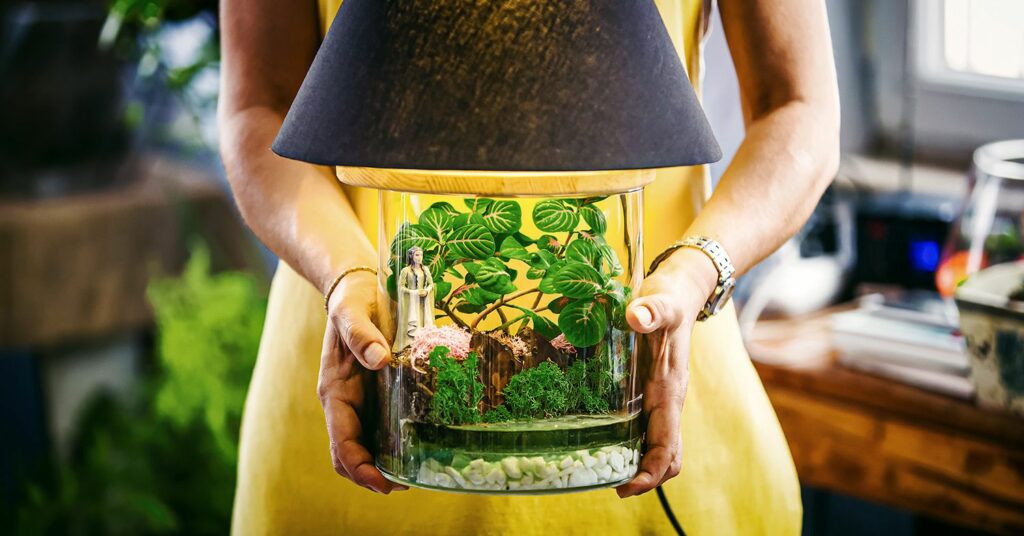Every Saturday, I have a routine. Wake up. Make coffee. Put on a podcast. Tend to 30+ house plants. I check to see who needs watering, I rotate the pots so that they grow evenly, and I trim and clean the leaves. Starting my mornings this way sets me up for the rest of my weekend in a good way.
Studies show that routines can help with anxiety and there is something to be said about how caring for plants can help us find a moment of peace. The American Horticultural Therapy Association (AHTA) defines horticultural therapy as the practice of working with plants under the guidance of a professional to achieve a set of goals. These can be physical or mental, ranging from improving mobility to improving social skills and anxiety. Programs are found in rehabilitation hospitals, prisons, veteran and cancer support systems, behavioral health settings, to name a few.
But, horticultural therapy can benefit the general population, too, particularly when it comes to stress reduction.
“During the pandemic, there was a great surge in outdoor experiences, increased interest in indoor/ landscape plants and gardening as people rediscovered or connected with nature meaningfully for the first time,” says Phyllis D’Amico, a registered horticultural therapist with the AHTA with more than 25 years of experience. “This speaks to the power of horticulture as a therapeutic medium as seekers found solace and healing through both their active and passive relationships with plants.”
There you have it, folks—plants do more than just bring a little greenery to your space. So, we asked D’Amico for her recommendations for easy home gardening ideas. Just keep in mind that while these can help you feel grounded, they are not a remedy for stress, anxiety, or depression nor can they replace working with a mental health professional.
5 home gardening ideas to help you relax
Build a terrarium
Not everyone has the space to house 200+ plants (or even 10) in their living space. Enter terrariums, which are essentially self-sustaining, little ecosystems contained within an enclosed glass container. They’re easy to find at most any plant shop, but it’s also quite simple—and not to mention, relaxing—to create one of your own.
Terrariums are also an excellent choice for anyone who might not have the space or time for a garden.
“The extent of the restorative experience [of working with plants] does not depend on physical size but conceptual size. A wilderness experience or vast natural area is not necessary,” says D’Amico. “You can enter a whole different world by gazing into a terrarium, relaxing on a terrace garden, observing the diversity of life in a small backyard pond. Attending to such patterns is restorative because it leaves room for us to think about other things and perhaps contemplate matters that might be difficult to process in other circumstances.”
In the video above, Sarah Gerrard-Jones, aka The Plant Rescuer on Instagram, shows us just how easy it is to create your own tiny greenhouse. Gerrard-Jones uses bun moss and a small parlor palm in her DIY terrarium, but says that you can put a number of plants in a closed terrarium. These include:
- Polka dot plants
- Nerve plants
- Creeping figs
- Baby tears (pilea depressa)
- Dwarf maidenhair, bird’s nest, and rabbit’s foot ferns
- Krauss’ spikemoss
- Pink arrowhead vine
- Strawberry begonia
- Store-bought moss (not wild)
Gerrard-Jones notes: “Never add succulents or cacti to a closed terrarium, they will die.”
Once set up, terrarium care is simple. Keep it in bright to moderate indirect light and keep it out of direct sunlight. Remove dead leaves and prune the plants if they grow too tall or if the terrarium gets too crowded. Open the lid once every few weeks and leave it off for a day to allow for air circulation.
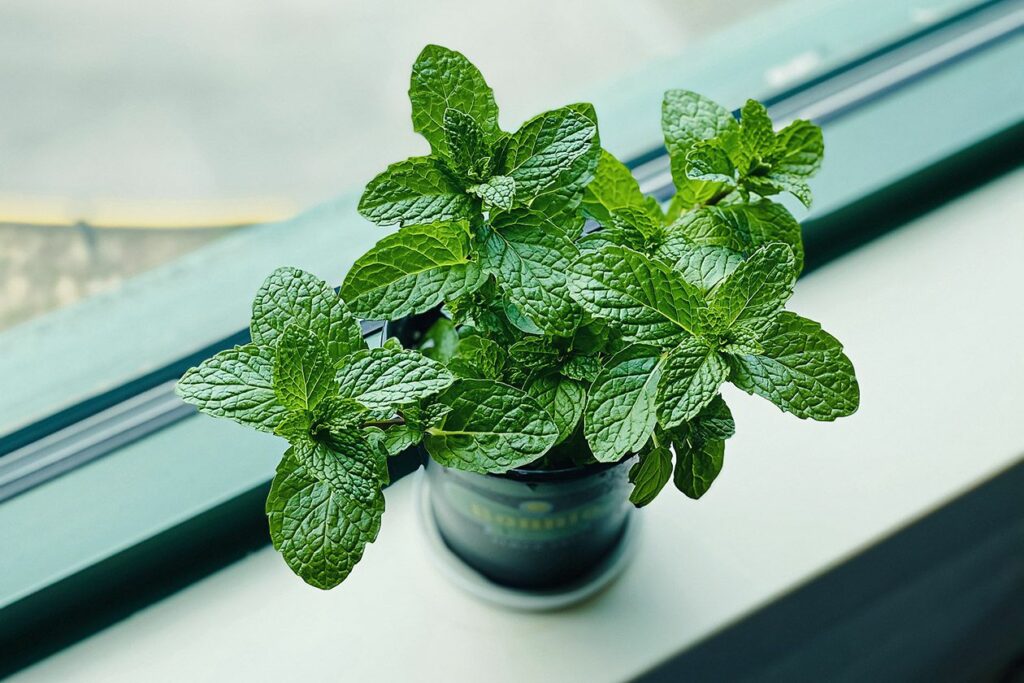
Plant a windowsill herb garden
Stress relief can be as close to you as your window. Herbs have long been valued by cultures across the world for their medicinal properties as well as their culinary uses. While many herbs thrive in bright sunlight, making them ideal for outdoor spaces, you can grow your own little indoor stress-relief garden indoors.
D’Amico recommends figuring out which herbs work best for your lighting. In general, herbs love well-draining soil and bright light, which comes from TK exposure (figure out which direction your window faces with a handy compass app.). As for watering, herbs like to stay moist, so water when the top two inches of soil are dry (don’t be afraid to get your fingers dirty to see if your herbs need a drink).
As far as calming properties go, some herbs are better than others. These include:
Mint: One of the easiest herbs to grow! Mint is known to run rampant in outdoor gardens, but it should be easy to keep under control in a windowsill box. It’s lovely as a tea, in salads like tabbouleh, oh, and in mojito popsicles.
Lemon Balm: A member of the mint family, lemon balm is another easy-to-grow herb that loves bright light. It has a cheery lemony fragrance that pairs well with fresh mint in tea or with fruit-infused water, but it also has a few culinary uses, like making dairy-free herb butter.
Catnip: Not just for cats, though your cat will love you for having this cousin of mint and lemon balm around. Start pinching it back when it reaches 6-inch height. It’s lovely in tea.
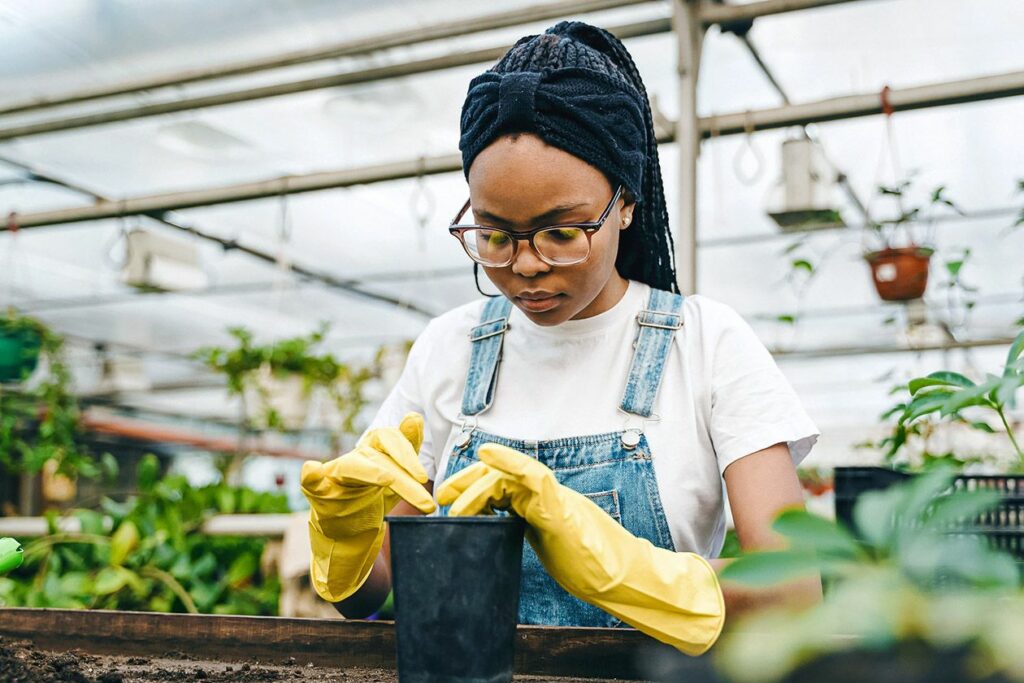
Home gardening idea pro tip: Prune, propagate, & clean!
Pruning is essential to plant care. You want your plant babes to grow up big and strong, and coming at their beautiful leaves with a set of shears sounds contradictory. But, it helps. Pruning plants helps increase the airflow between leaves, allowing for new growth to spring forth. It also helps to deter pests who love to infest houseplants, like scale insects and mealybugs.
“The actions of watering, removing spent blossoms/faded leaves, observing signs of growth and/ or disease, transplanting, repotting—all of these require focus and bring us into the moment,” says D’Amico. “These actions may cause us to reflect on similar processes in our own lives. The plant world is rich in metaphors that can ground us and cause us to examine ourselves in a new light.”
Some plants also make great candidates for propagation—that’s when you grow an entirely new plant from one cutting. Plants that are easy to propagate include pothos, snake plants, and ZZ plants. Just place the cutting in water and let it root before repotting. Before you know it, your space will be lush and verdant (or, at least the corner of your home with the good lighting will be).
Every now and then, your plants need a good cleaning to remove the dust that accumulates over time. This is because plants create their own food through photosynthesis, which relies on sunlight.
And, what helps your plants can also help you find a bit of respite in this noisy, fast-paced world. Cleaning your green babes is another activity that calls for you to slow down and be deliberate in your actions. Just take a damp, clean cloth, and gently wipe down every leaf.
Put on some lo-fi beats to relax to, take deep breaths, and repeat. This may be one of the simplest home gardening ideas, but it creates a lot of space for chilling out.
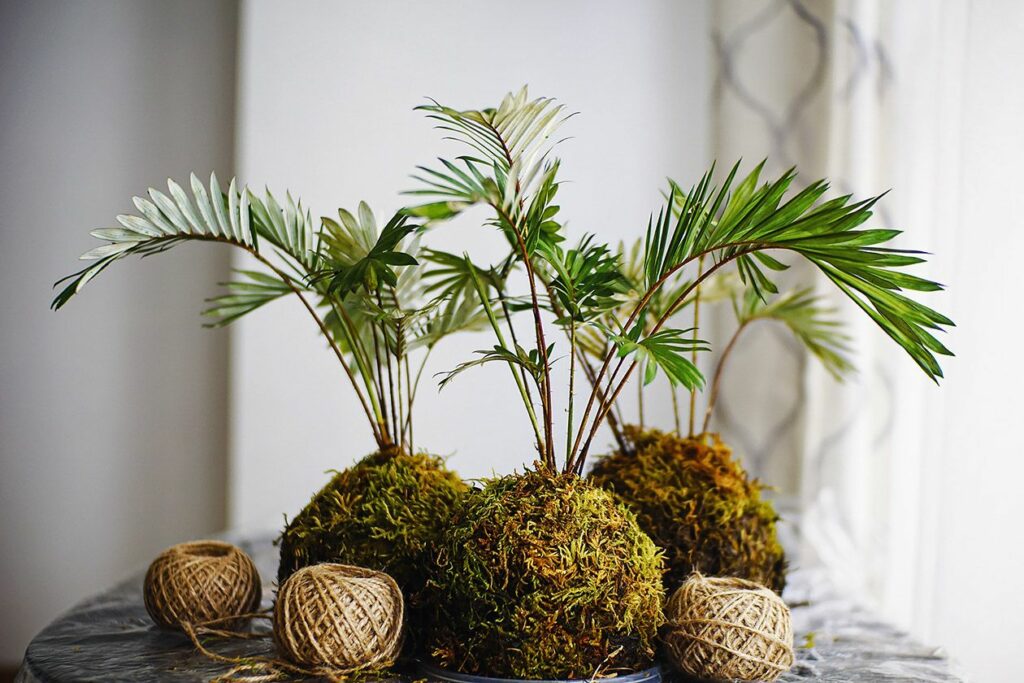
Make a kokedama
Kokedama is the Japanese art of growing plants in a moss-covered ball of soil wrapped with twine. The name is quite literal, coming from the words koke, meaning “moss”, and dama, meaning “ball.” It’s also sometimes known as “the poor man’s bonsai.” To make it, you need:
- Scissors
- Twine
- Peat moss
- Bonsai soil
- Fresh or dried sheet moss
- Spray bottle
And, you’ll need to pick a plant. Some good choices for your kokedama include:
- Pothos
- Philodendron
- Dracaena
- Ferns
Mix the peat moss and bonsai soil in a 7:3 ratio. Add enough water so you can make a firm ball, about the size of a grapefruit, that doesn’t crumble. Next, depot your plant and shake off the excess soil around the roots. (If your plant is rootbound, which is when the roots tightly form around the bottom of the pot, give it a trim with garden shears.)
Now, take your sheet moss (if you bought the dry kind, soak it in water until damp, then rise) and wrap it around the soil. Take a long cut of twine, and bind it, wrapping it around the entirety of the moss twice. It should look secure, but you should still see moss.
Next, tightly sculpt the damp soil in a round shape around the roots. Squeeze out the excess moisture. Wrap it with another sheet of moss and bine with twine again. Give it a good spritz of water.
Water your kokedama when it feels light by soaking it in room-temperature water for about 10 minutes. Moss prefers indirect light, so display it in a shady part of your home.
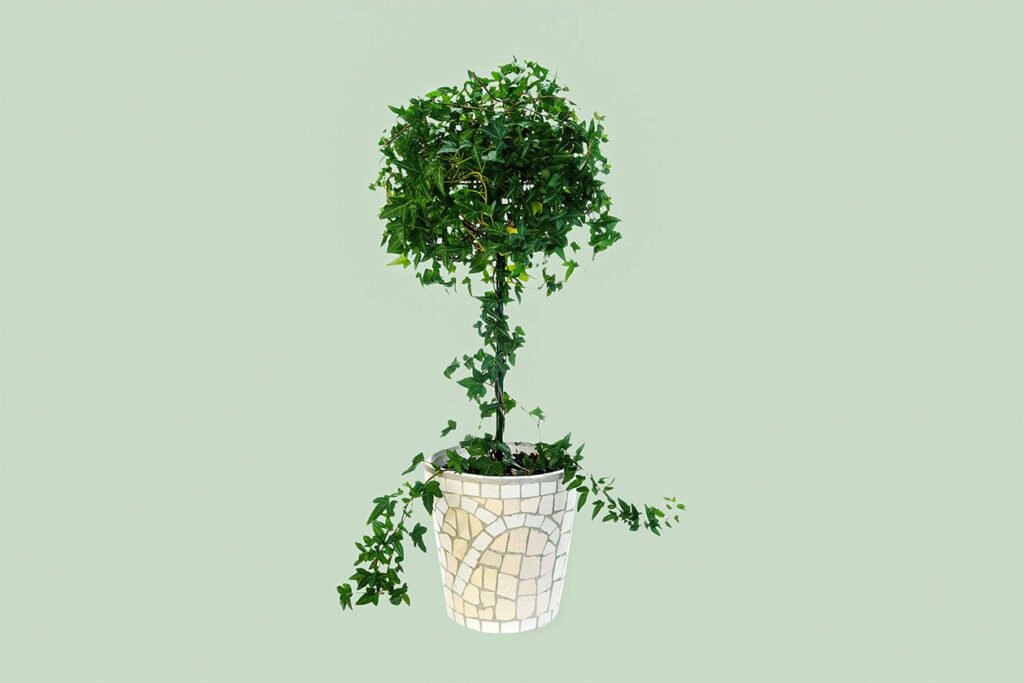
Make a topiary
Topiaries are one of the oldest forms of garden art, said to have been created by a friend of the Roman emperor Augustus in the 1st century CE. This is the practice of shaping shrubs and trees into defined forms, ranging from animals to geometric shapes. You’ll usually find them towering in gardens, but you can build a topiary at home, too. (And you don’t even need a tree.) You’ll need:
- A terracotta pot or pot with a drainage hole
- Potting soil
- Garden stones or sand
- Flexible wire or a trellis
- A vine plant, like English ivy or creeping fig (a 6 or 8-inch basket, depending on what size terracotta pot you have)
- Garden shears
Making an at-home topiary is simple and involves inserting a wire shape into a pot of soil, then gently wrapping the vine plant around the shape.
Start by filling the bottom of the terracotta pot with sand or stones —this will help keep it stable. Top with potting soil, remove your vine from its nursery pot, and plant it in the terracotta pot. Now, it’s time to get creative. Take your wire and flex bend it into the form you want, like an arch, an obelisk, a heart, a sphere, a crescent moon. Insert it into the pot, then gently wrap the vine around the shape. Water your vine and place in indirect sunlight.
Now, take these home gardening ideas, go forth, and enjoy making your space just a little bit greener!
“Because horticulture is so versatile, plants both inside and outside of our homes give us opportunities to enrich not only our personal environments but ourselves because as you learn about plants, there is always something more to know,” says D’Amico. “For a person who may be homebound, the role reversal of being the caregiver of plants can be empowering. Parents and children can garden together and observe valuable lessons on being the stewards of the planet. Producing one’s own food is an exercise in self-sufficiency. A person experiencing social isolation can become part of a neighborhood community garden.”
LIVEKINDLY is here to help you navigate the growing marketplace of sustainable products that promote a kinder planet. All of our selections are curated by the editorial team. If you buy something we link to on our site, LIVEKINDLY may earn a commission.


